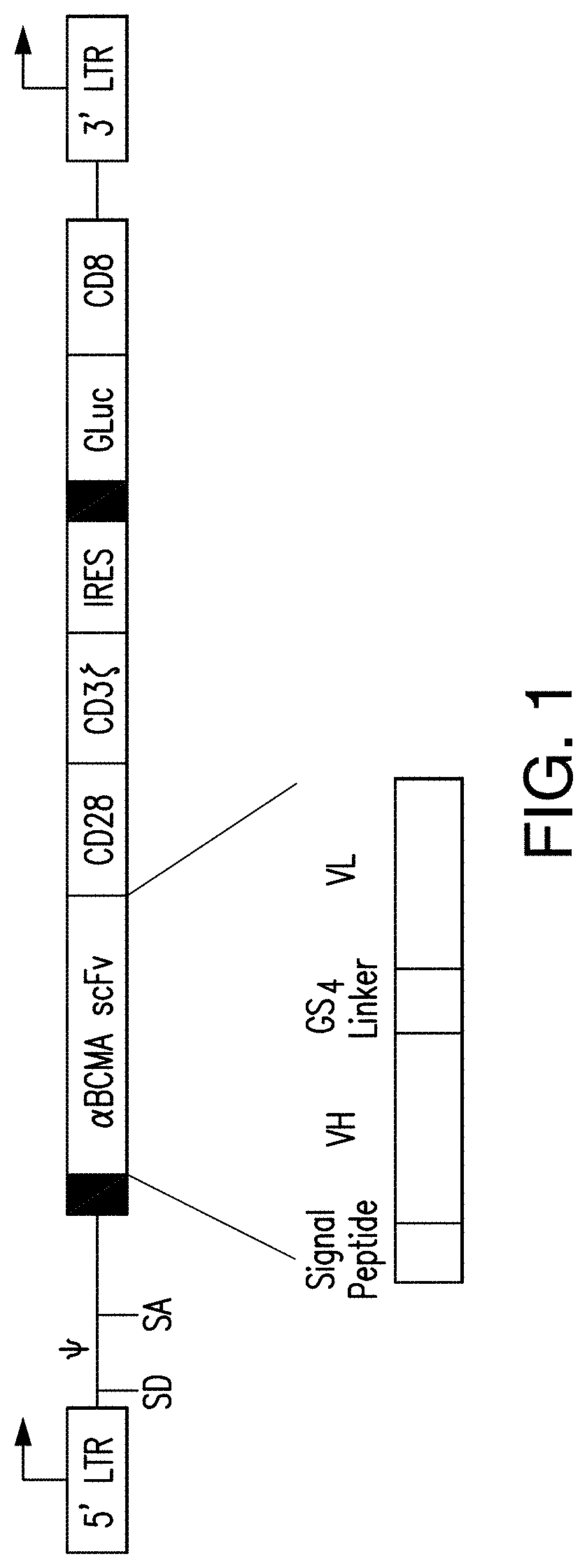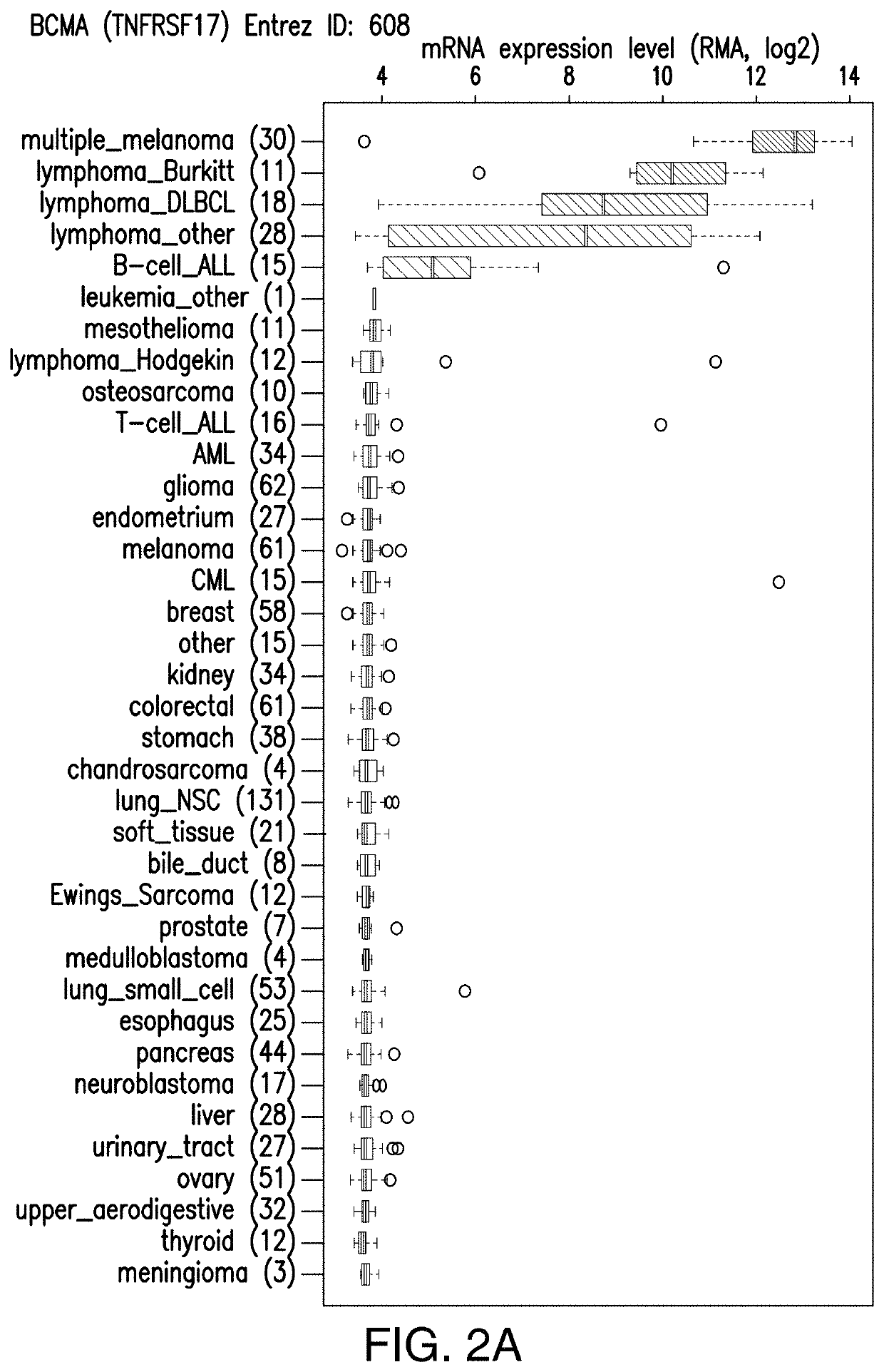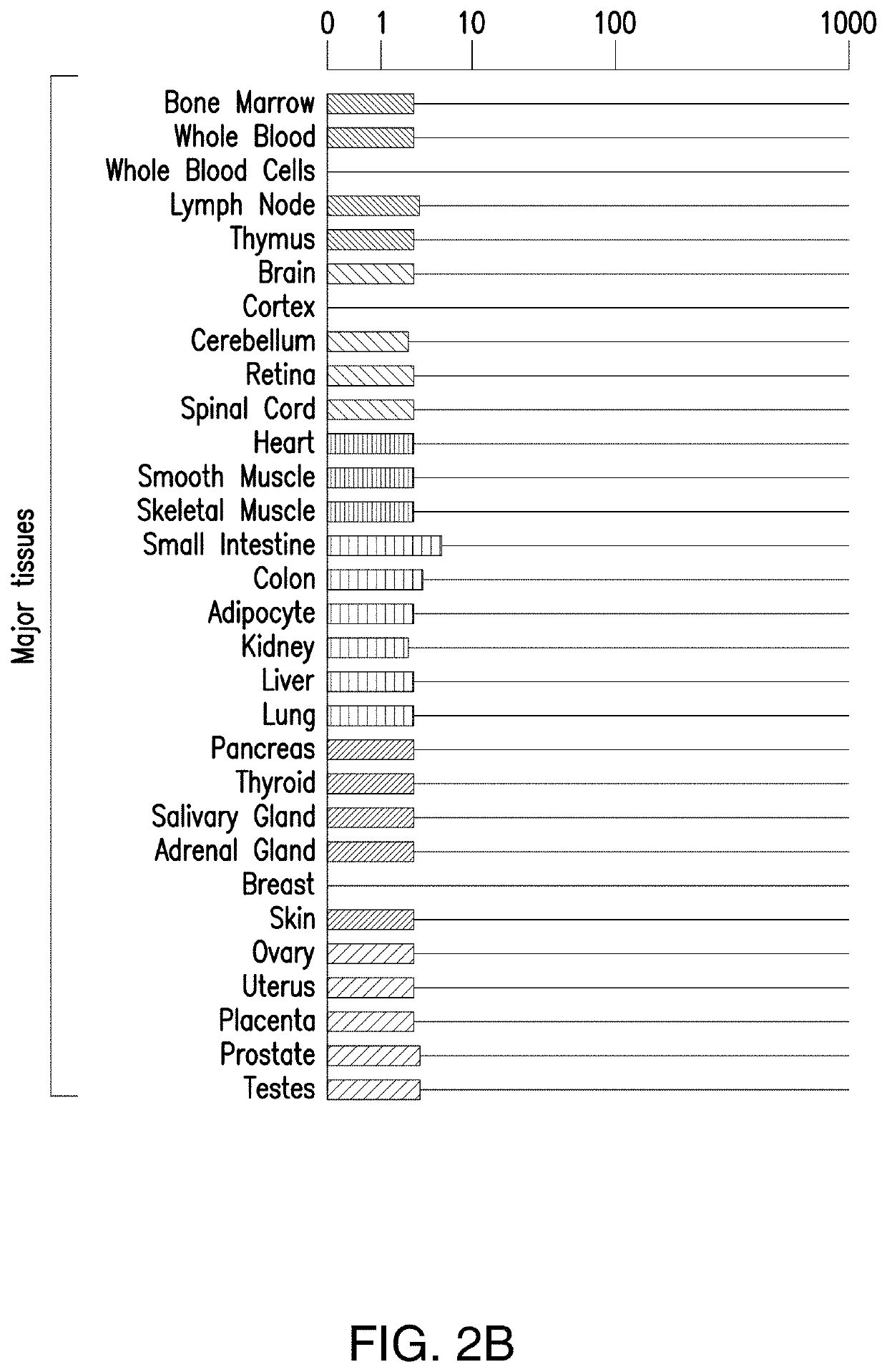Chimeric antigen receptors targeting B-cell maturation antigen and uses thereof
a technology of chimeric antigen and b-cell maturation, which is applied in the direction of specific cell targeting, drug composition, peptide, etc., can solve the problems of high transplant-associated morbidity and mortality, limited allogeneic transplants, etc., and achieves the reduction of tumor burden, tumor burden reduction, and tumor burden reduction
- Summary
- Abstract
- Description
- Claims
- Application Information
AI Technical Summary
Benefits of technology
Problems solved by technology
Method used
Image
Examples
example 1
ession in Various Tissues
[0379]The Expression of human BCMA was evaluated in various malignant and normal tissues by investigating gene expression profiles in databases such as the cancer cell line encyclopedia and BioGPS. As shown in FIGS. 2A-2D, human BCMA was highly expressed in lymphoma and multiple myeloma, but not in other malignant tissues. Normal expression appeared limited to B-cells and plasma cells. Potential BCMA targeted CAR T cell eradication of these normal cell types may not have significant adverse effects based on inventors' patient experience with CD19 targeted CAR T cells. Any lack of physiologic antibody production can be addressed with intravenous immunoglobulin treatment.
example 2
of BCMA-Specific 28z CARs
[0380]Multiple unique fully human scFv's to BCMA were generated, and CARs based on these scFv's were generated. Multiple scFv's were identified by screening a fully human scFv phage library (>6×1010 scFv's) with BCMA-Fc fusion protein and then 3T3 cells expressing human BCMA. After sequencing, 57 unique and BCMA-Fc positive clones were found out of 79 sequenced positive clones; the unique clone rate was 72%. FACS analysis of phage antibody clones against BCMA-3T3 and parental 3T3 cell lines resulted in confirming 25 unique positive clones.
[0381]ET140-153 scFv (or “ET140-3 scFv”), ET140-174 scFv (or “ET140-24 scFv”), ET140-187 scFv (or “ET140-37 scFv”), ET140-190 scFv (or “ET140-40 scFv”), and ET140-204 scFv (or “ET140-54 scFv”) were used to generate BCMA-targeted 28z CARs 3, 24, 37, 40, and 54, respectively. These BCMA-targeted 28z CARs have similar structure, e.g., each has a transmembrane domain comprising a CD28 polypeptide, and an intracellular domain co...
example 3
of BCMA-Specific CARs
[0384]The anti-tumor activity of the presently disclosed BCMA-specific 28z CARs was evaluated. The in vitro data showed that the BCMA-specific CARs specifically killed BCMA presenting cells, including MINI cell lines. For example, as shown in FIG. 5, the T cells expressing the BCMA-specific 28z CAR24 killed 3T3 cells overexpressing BCMA (but not control 3T3s overexpressing an irrelevant antigen). As shown in FIG. 6, the T cells expressing the BCMA-specific 28z CARs 24, 40, and 54 killed human MM cell lines.
PUM
| Property | Measurement | Unit |
|---|---|---|
| binding affinity | aaaaa | aaaaa |
Abstract
Description
Claims
Application Information
 Login to View More
Login to View More - R&D
- Intellectual Property
- Life Sciences
- Materials
- Tech Scout
- Unparalleled Data Quality
- Higher Quality Content
- 60% Fewer Hallucinations
Browse by: Latest US Patents, China's latest patents, Technical Efficacy Thesaurus, Application Domain, Technology Topic, Popular Technical Reports.
© 2025 PatSnap. All rights reserved.Legal|Privacy policy|Modern Slavery Act Transparency Statement|Sitemap|About US| Contact US: help@patsnap.com



